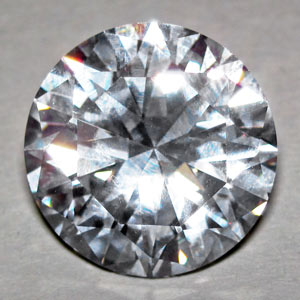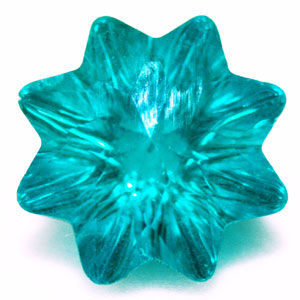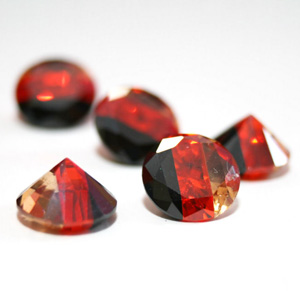cubic zirconia
Cubic Zirconia, often abbreviated as CZ, is a synthetic gemstone that has gained popularity as a brilliant and affordable alternative to natural diamonds. Its name stems from its crystal structure, which is cubic in nature, closely resembling the crystal lattice of diamond.
Cubic Zirconia is created in laboratories through a meticulous process that involves melting zirconium oxide and yttrium oxide at extremely high temperatures and then cooling it to form colourless, flawless crystals. This synthetic gemstone can also be crafted in various colours by adding trace elements to the crystal mixture.
While it is not found in nature, the appeal of Cubic Zirconia lies in its diamond-like sparkle and affordability, making it a popular choice for jewellery, particularly as a diamond simulant. Its introduction in the 1970s revolutionized the gemstone market, offering an accessible option for those seeking brilliant, sparkly jewellery without the cost associated with natural diamonds.
Click on the terms in the table below to discover their meaning



Click on the terms in the table below to discover their meaning
| Name | Cubic Zirconia |
|---|---|
| Category | Oxide mineral |
| Chemical Formula | ZrO2 |
| IMA Symbol | Not approved |
| Crystal System | Cubic (Isometric) |
| Crystal Habit | Granular in natural crystals; columnar in synthetic crystals |
| Twinning | Absent |
| Cleavage | None |
| Fracture | Conchoidal |
| Tenacity | Brittle |
| Hardness (Moh's Scale) |
8 - 8.5 |
| Specific Gravity | 5.5 - 6.0 |
| Diaphaneity | Transparent to opaque |
| Colour | Can be synthesised in any colour |
| Streak | White |
| Lustre | Sub-adamantine |
| Optical Class | Isotropic |
| Refractive index | n = 2.150 - 2.180 |
| Birefringence | Absent |
| Dispersion | Rd = 0.060 |
| Pleochroism | Absent |
| Clarity | Type I |
| Notable Varieties | Synthetic Cubic Zirconia |
References
Hansen, R. (2022). Gemstones: A Concise Reference Guide. Clayton: CSIRO Publishing.
Schumann, W. (2013). Gemstones of the World (17th ed.). (D. Shea, & N. Shea, Trans.) New York: Stirling Publishing Company.